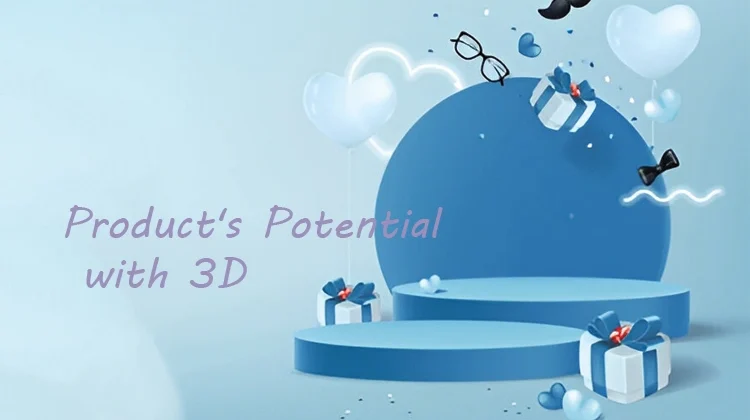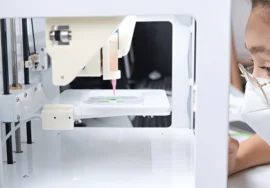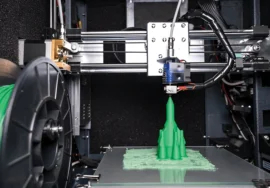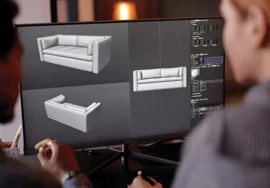
A Comprehensive Guide.
In today’s fast-paced digital world, businesses are constantly seeking innovative ways to showcase their products and engage their audience. One powerful tool that has emerged as a game-changer is 3D technology. By leveraging the capabilities of 3D modeling, rendering, and animation, businesses can unlock the full potential of their products and create immersive experiences that captivate and convert.
The Benefits of 3D Technology
3D technology offers a multitude of advantages for businesses across various industries. Here are the key benefits:
- Enhanced Product Visualization: 3D models give a comprehensive and realistic representation of your product, allowing customers to visualize it from every angle. This eliminates any ambiguity and helps them make informed purchasing decisions.
- Improved Product Design and Development: 3D modeling facilitates efficient collaboration between designers, engineers, and other stakeholders, enabling seamless communication and faster iteration cycles. By visualizing designs in 3D, potential issues can be identified and addressed early on, saving time and resources.
- Accelerated Prototyping: 3D printing technology allows for rapid prototyping, enabling you to test and refine your product design before investing in large-scale production. This iterative approach helps decrease risks and ensures that your final product meets the highest standards.
- Engaging Marketing Materials: 3D animations and interactive product demonstrations can make your marketing materials more dynamic and captivating. These visually appealing presentations can help you stand out from the competition and leave a lasting impression on your target audience.
- Virtual and Augmented Reality Experiences: 3D technology enables the creation of immersive virtual and augmented reality experiences, allowing customers to interact with your products in a whole new way. This can be particularly beneficial for e-commerce businesses, as it helps bridge the gap between online and offline shopping.
How to use 3D Technology
To fully harness the power of 3D technology, consider the following strategies:
- Product Visualization: Create high-quality 3D renders and animations that showcase your product from every angle. Use realistic materials, lighting, and textures to create a lifelike representation.
- Interactive Product Demonstrations: Develop interactive 3D product demonstrations that allow customers to explore your product features and benefits at their own pace. Incorporate interactive elements like zoom, rotate, and click-to-highlight for an engaging experience.
- Virtual Showrooms and Product Tours: Create virtual showrooms where customers can virtually walk through your product offerings. This is especially useful for businesses with large product catalogs or those that want to create a unique brand experience.
- 3D Printing for Prototyping and Production: use 3D printing technology to rapidly prototype and produce small batches of your product. This can be particularly beneficial for customized products or those with complex geometries.
- Augmented Reality (AR) Experiences: Develop AR apps that allow customers to visualize your product in their environment. This can be a powerful tool for furniture, home decor, and other products that require spatial understanding.
Key Considerations for Successful 3D Implementation
To ensure the successful implementation of 3D technology, keep the following in mind:
- High-Quality 3D Models: Invest in high-quality 3D models that accurately represent your product. This will enhance the overall visual appeal and credibility of your marketing materials.
- Optimized File Formats: Use file formats that are compatible with various platforms and devices to ensure seamless viewing and interaction.
- User-Friendly Interfaces: Design intuitive and user-friendly interfaces for your 3D experiences. Avoid complex navigation and unnecessary distractions.
- Mobile Optimization: Ensure that your 3D content is optimized for mobile devices to cater to the growing number of mobile users.
- Regular Updates: Keep your 3D content up-to-date to reflect any changes in your product offerings or design.
The Future of 3D Technology in Product Visualization
As technology continues to advance, the possibilities for 3D technology in product visualization are expanding rapidly. Here are some emerging trends to watch out for:
- Real-time 3D Rendering: Real-time 3D rendering allows for instant updates and interactions with 3D models, making it ideal for live product demonstrations and virtual showrooms.
- Artificial Intelligence and Machine Learning: AI and ML can automate various aspects of 3D modeling and rendering, such as texture mapping, lighting, and animation, saving time and effort.
- Virtual and Augmented Reality: VR and AR experiences are becoming more sophisticated, offering immersive product demonstrations and virtual try-on options.
- 3D Printing Advancements: 3D printing technology is evolving rapidly, enabling the production of more complex and high-quality products.
Conclusion
By embracing 3D technology, businesses can elevate their product visualization game and create unforgettable experiences for their customers. Whether it’s through stunning 3D renders, interactive product demonstrations, or immersive VR experiences, the possibilities are endless.





